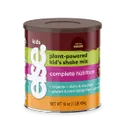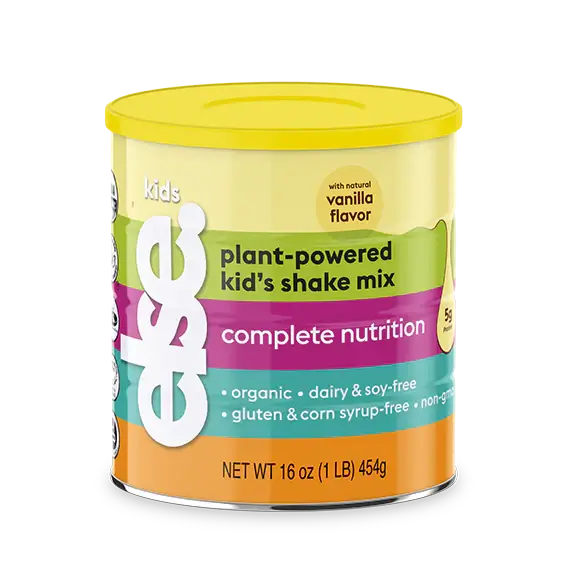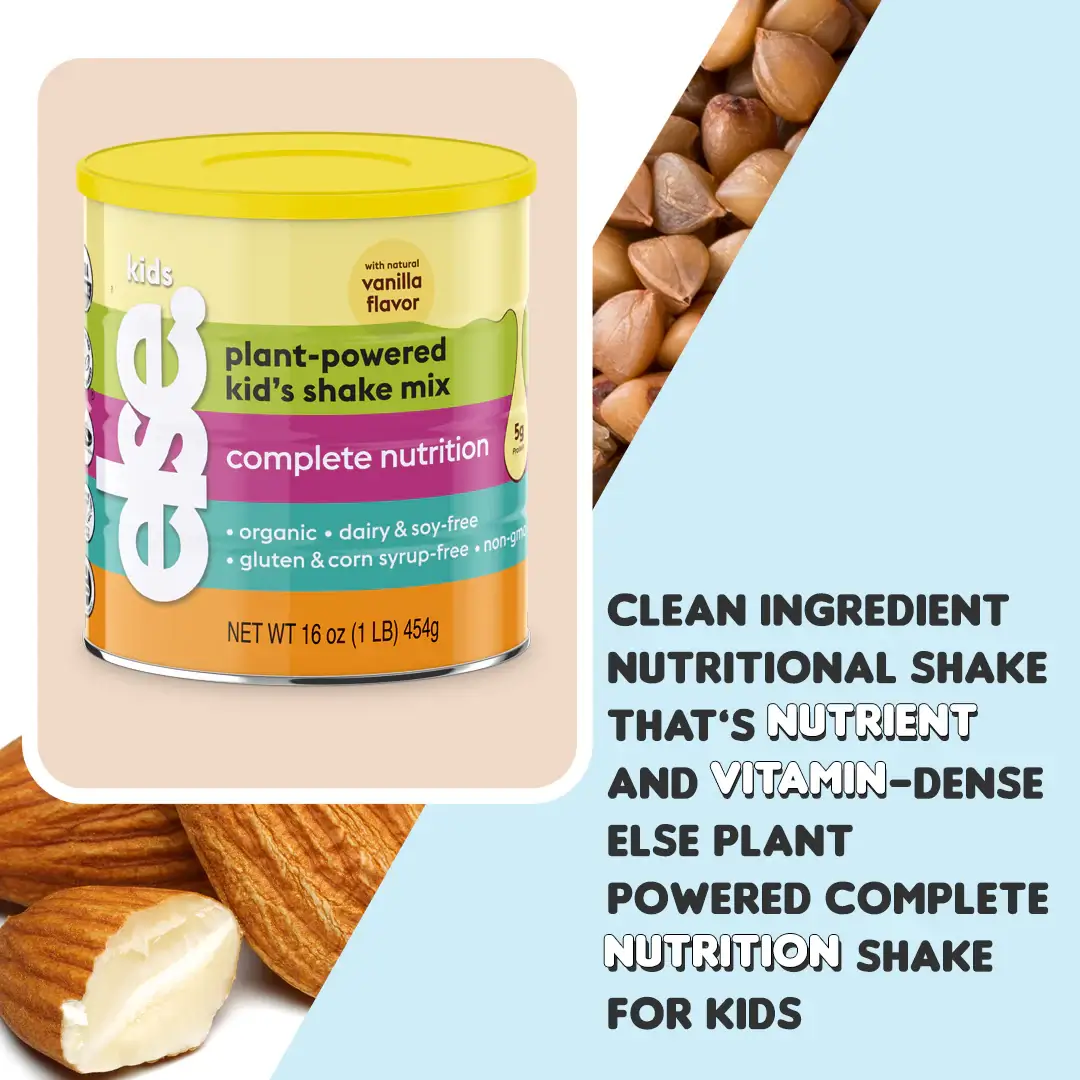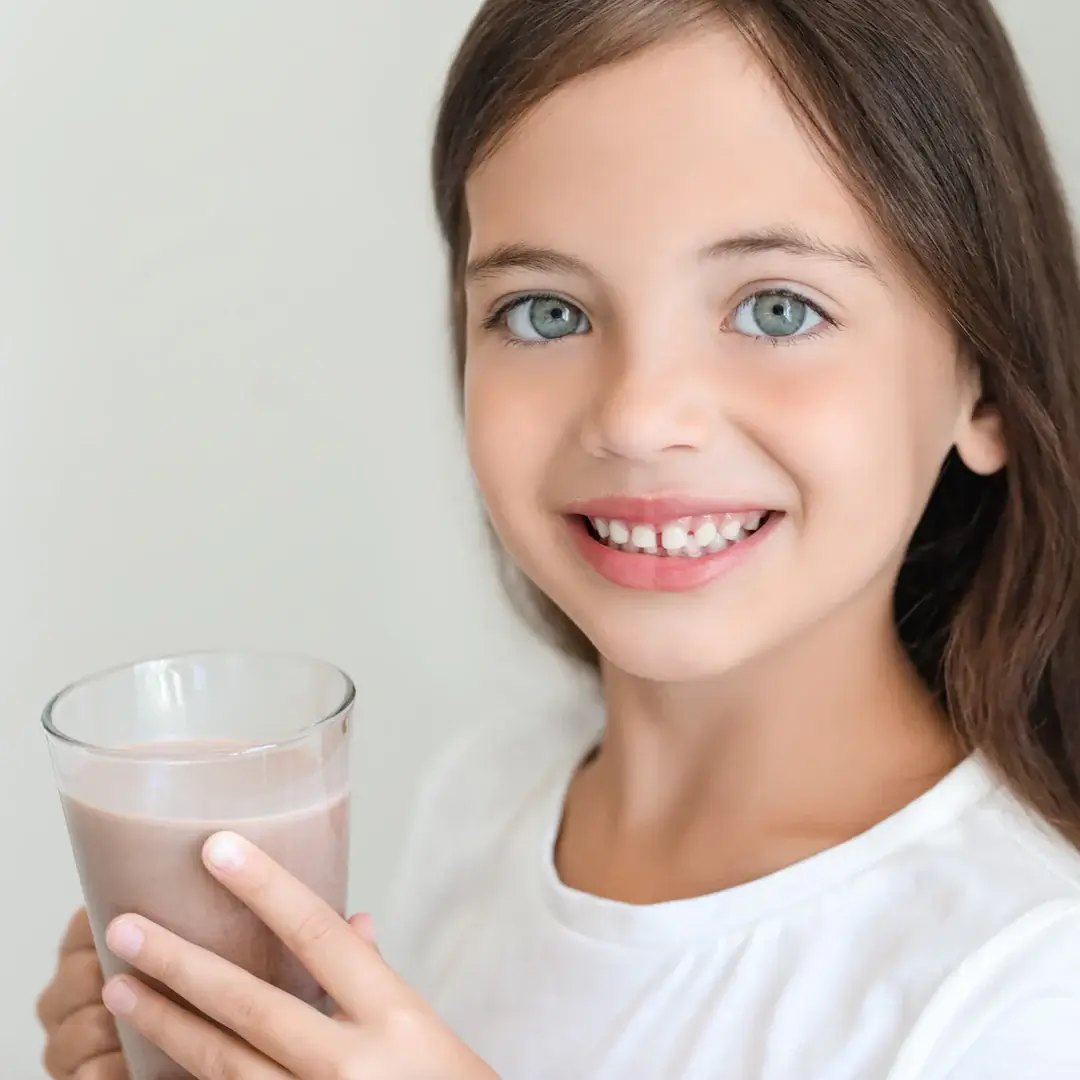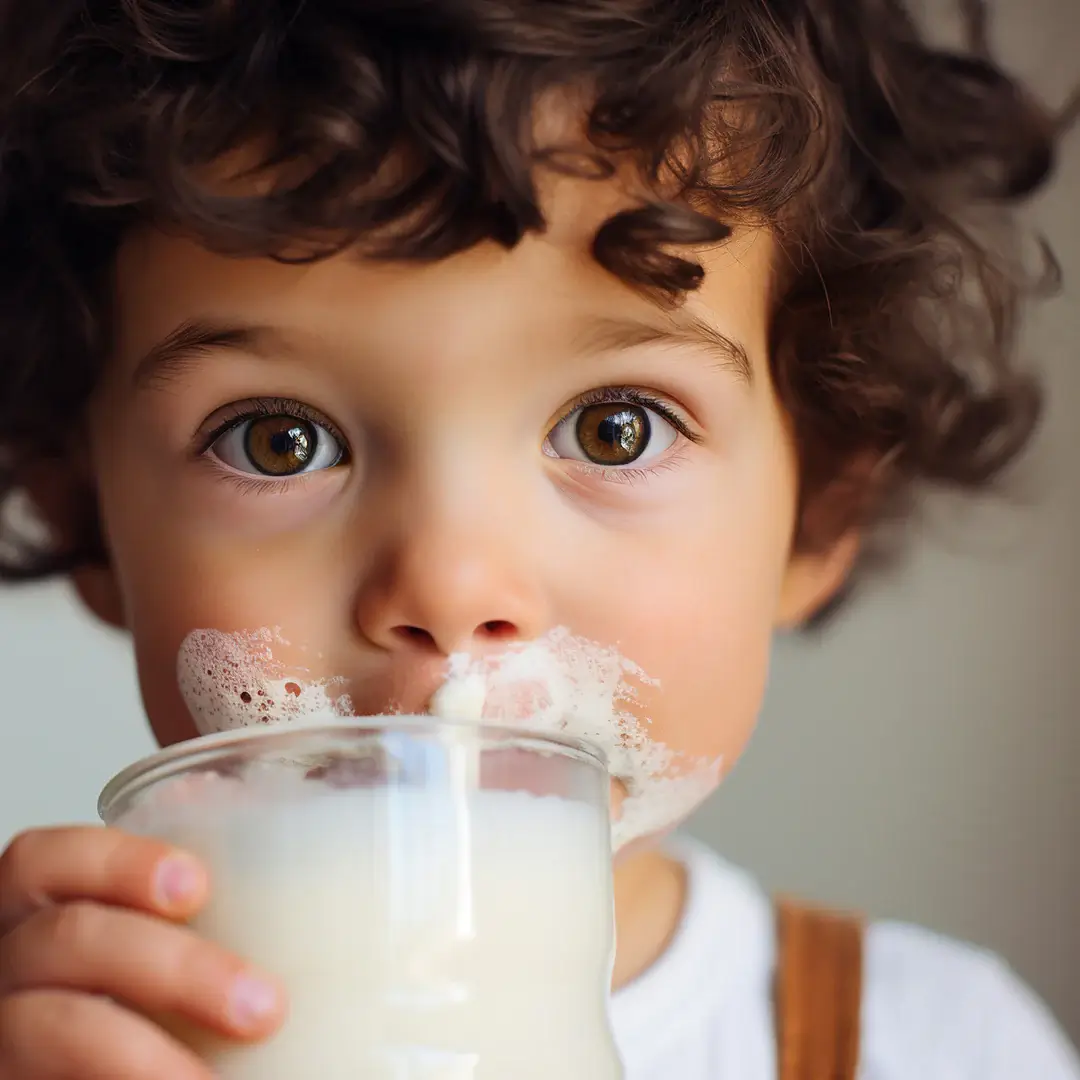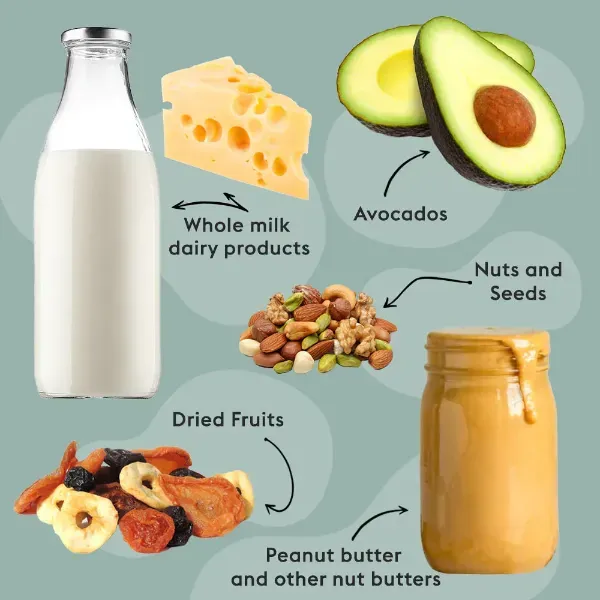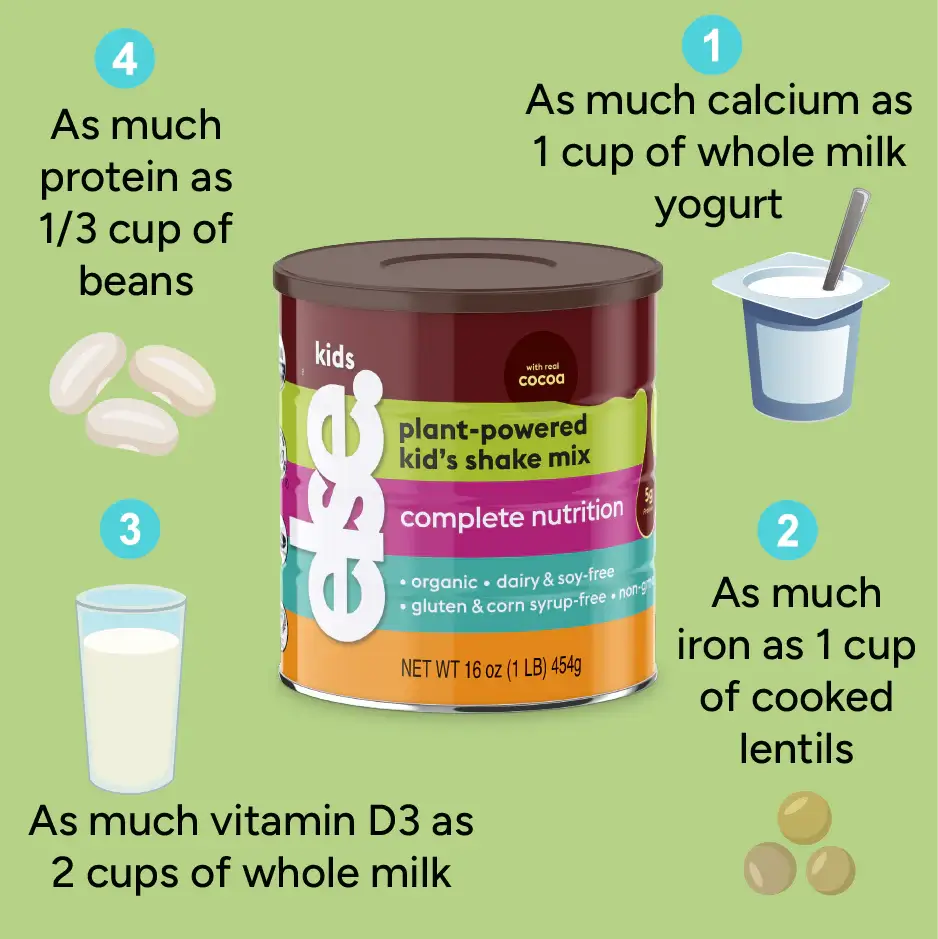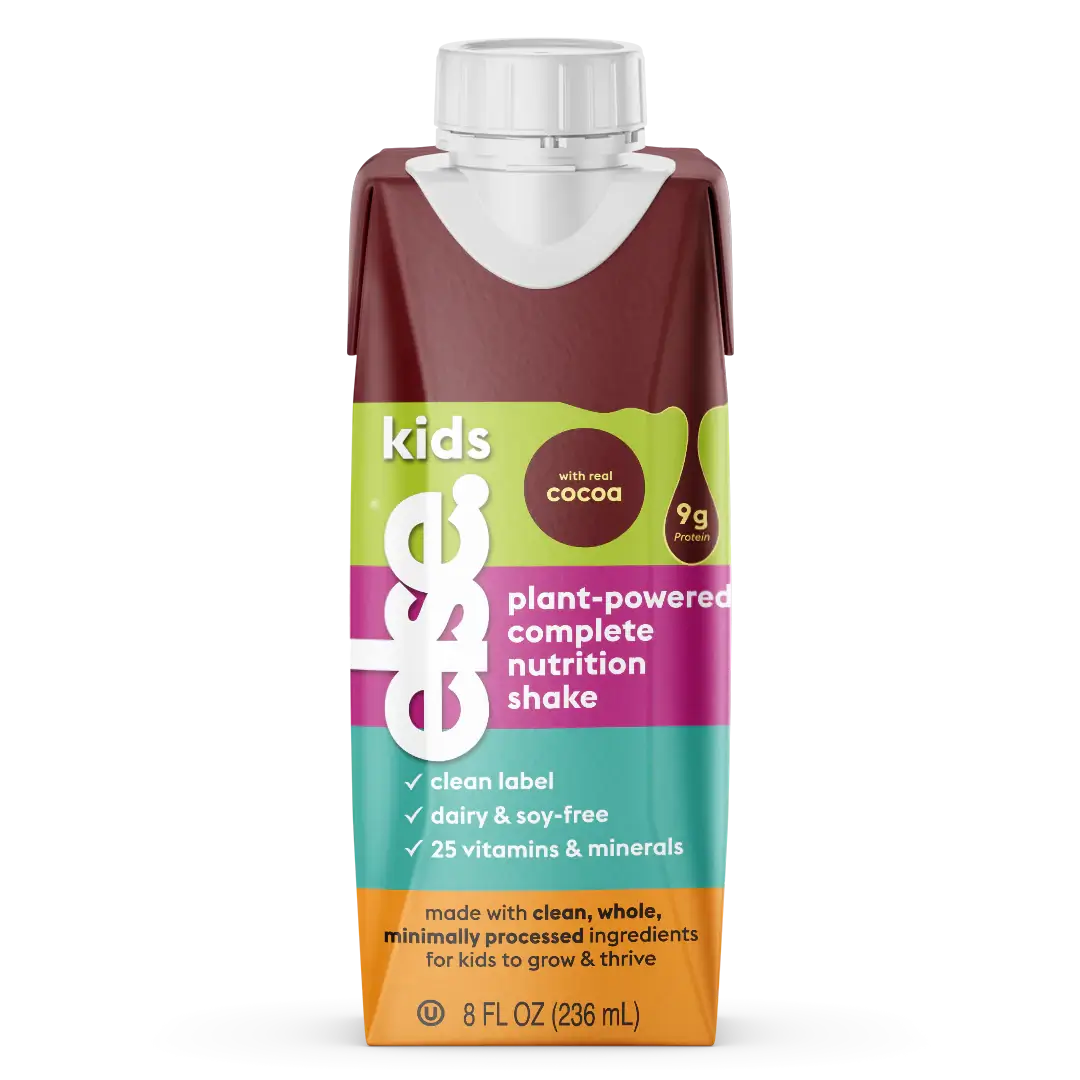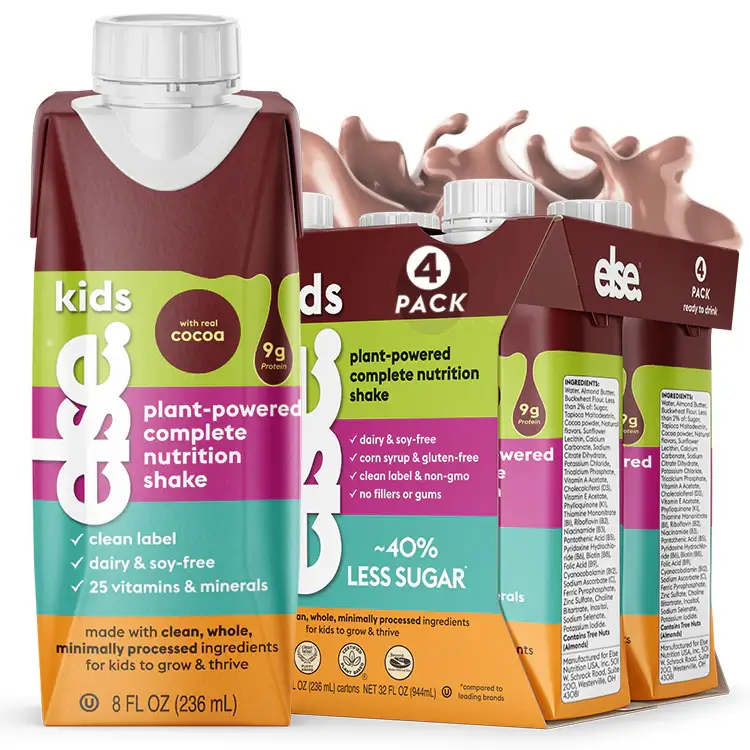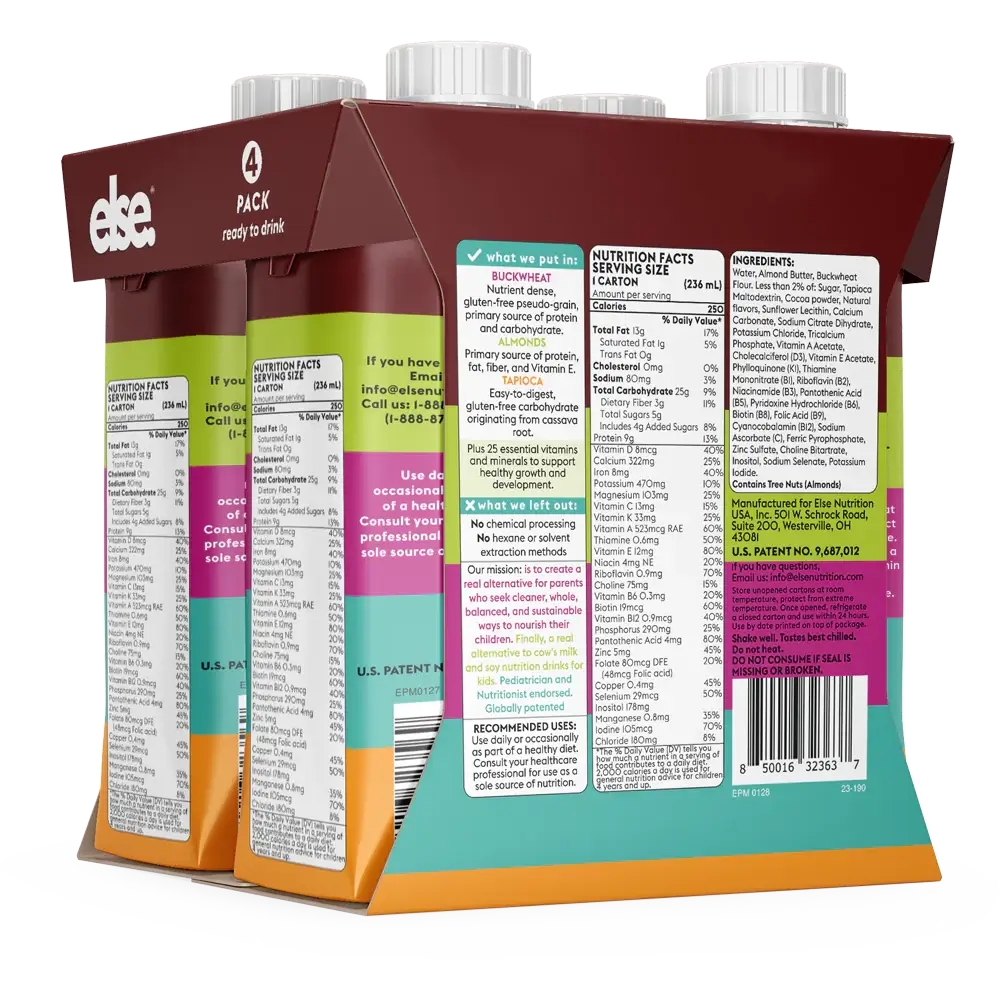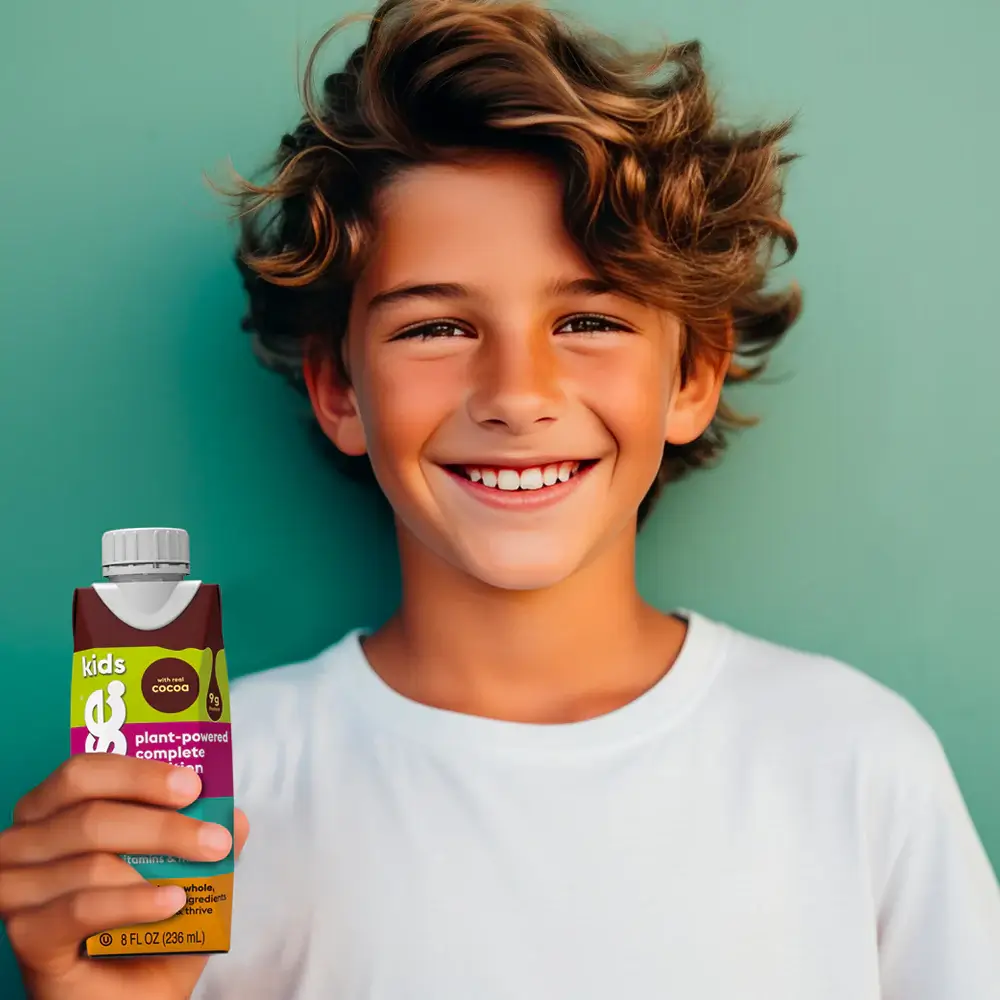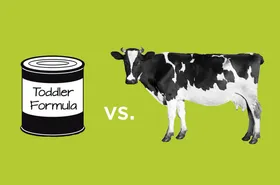Does Your Child Need a Weight-Gaining Shake?
Promote healthy weight gain with nutritious weight-gaining shakes and discover expert tips, meal plans, and recipes tailored for kids to ensure they thrive with the right nutrition.
Updated August 1, 2024

Boost your child's energy levels by increasing their calorie intake with weight-gaining shakes.
Not consuming enough calories can impact your child’s health in various ways. Being undernourished can lead to low energy levels, a diminished immune system, and impaired growth.
If you are concerned about your child being underweight, understanding how to help them gain weight healthily is important. It may be tempting to provide foods high in fat and sugar to pack on the pounds; however, these foods only provide empty calories. Empty calories will promote weight gain but won’t provide the nutrients your child needs for their rapidly growing body.
» Help your little ones gain healthy weight with proper nutrition
Gaining weight in a healthy way means gradually increasing your child’s consumption of nutritious, calorie-dense foods from a variety of sources. If your child has fallen off the growth curve and isn’t consuming adequate calories from various foods, it may be time to consider supplementing their diet with weight-gaining shakes.
» Discover nutritious plant-based formulas to supplement your kid's diet
Establishing Good Eating Habits
If you are concerned that your child may be underweight, it’s important to provide high-calorie, nutrient-dense food. Establishing good eating habits will improve your child’s energy levels and immune system. It also promotes healthy growth.
» Get expert tips on how to support your kid's immunity with nutrition
Good eating habits for kids include:
- Avoiding grazing and snacking throughout the day. Children are much more likely to eat a well-balanced meal if they haven’t been snacking on empty calories all day.
- Focusing on serving high-nutrient, high-calorie foods like whole milk yogurt, nuts, cheeses, Else Toddler Formula, and nut butter.
- Limiting drinks at mealtimes. Drinking a lot during meals may fill your child up, leaving little room for solid foods.
- Limiting low-nutrient, energy-dense foods with empty calories like candy, chips, cookies, and sodas. Empty calories might add some weight, but they lack the nutrients a child needs to build a strong, healthy body.
Despite your best efforts, some children may not reach their recommended weight with solid food alone. Picky eaters or kids who don't have much of an appetite may be willing to drink shakes that are packed with calories and nutrients to help them grow and thrive.
» Try the best nutritious shakes for kids to help build good eating habits for your little ones
How Many Calories Does My Child Need?
There isn’t a one-size-fits-all approach to how many calories your child needs each day. Every child has varying activity levels and will burn calories at different rates. While counting every calorie your child consumes may not be necessary, having a ballpark understanding of how many calories your child should have if you’re concerned about their weight may be helpful.
» Understand the dietary fats and carbohydrate needs of infants and toddlers
According to the Dietary Guidelines for Americans, the estimated daily calorie needs for moderately active boys and girls aged 2–10 include:
| Age | Boys | Girls |
|---|---|---|
| 2 | 1,000 calories/day | 1,000 calories/day |
| 3 | 1,400 calories/day | 1,200 calories/day |
| 4 | 1,400 calories/day | 1,400 calories/day |
| 5 | 1,400 calories/day | 1,400 calories/day |
| 6 | 1,600 calories/day | 1,400 calories/day |
| 7 | 1,600 calories/day | 1,600 calories/day |
| 8 | 1,600 calories/day | 1,600 calories/day |
| 9 | 1,800 calories/day | 1,600 calories/day |
| 10 | 1,800 calories/day | 1,800 calories/day |
» Explore more nutrition tips and tricks for all ages
When Should You Consider Using Weight-Gaining Shakes for Your Kid?
Weight-to-length measurements monitor your child's growth from birth to age two. After that, your child’s growth will be assessed using the body mass index (BMI) chart. The BMI compares a child’s weight to their height. Children in the bottom 5 percent for body mass index are considered underweight.
Besides relying on the BMI growth chart, there are signs that you can watch for if you are concerned that your child is underweight:
- Your child’s weight percentile continues to trend downward.
- Your child isn’t outgrowing their clothes each season.
- Your child’s ribs stick out or are prominently visible.
» Learn how to increase calorie intake in toddlers
Possible Reasons Why Your Child Is Underweight
There are a variety of reasons why a child may be underweight. One of the most common reasons is simply due to inadequate food intake.
» Help your kid gain healthy weight with better nutritional supplement
Other children who may need help gaining weight include those with chronic medical conditions, children with food allergies, and children struggling with digestive problems. Another reason a child may be underweight is due to medication that interferes with their appetite. Medication, particularly those prescribed for ADHD, can impact appetite and lead to weight loss. In fact, according to research, roughly 20% of people with ADHD who were treated with stimulants reported a loss of appetite.
You should consider weight gaining shakes if your child’s eating patterns abruptly change, avoiding specific foods, or if you notice a decline in their weight.
» Make mealtime fun and nutritious with delicious plant-powered formulas
Advantages of Weight Gaining Shakes
While healthy food intake is essential, weight-gaining shakes have many advantages for kids.
- They can provide the right balance of nutrients to help underweight children move toward a healthier body weight. These weight gain supplements can boost your child’s calorie intake and provide a mix of carbohydrates, protein, and healthy fats to ensure proper and adequate growth.
- Weight gain shakes are often made with whole fruit, which provides enough natural sugar to sweeten the beverage and may curb your picky eater’s cravings for highly processed, sugary foods. Since they are made with only your chosen ingredients, it helps your kids avoid eating foods with questionable ingredients.
- Additionally, liquids can sometimes go down easier and quicker than solid foods and can be packed with weight-gaining ingredients. Therefore, nutritional shakes may appeal to the busy, picky eater looking forward to getting back to playing as quickly as possible.
» Understand the benefits of organic nutrition shakes for healthy weight gain
When to Serve Shakes?
Weight gain supplements for kids are intended to be a supplement, not a meal replacement. Therefore, it’s recommended to give your child the shakes between meals as snacks rather than with their meals. They tend to be filling, and it may not be realistic for a child to eat solid foods and drink a shake simultaneously.
» Learn when to offer supplemental meal replacement shakes to kids
Eating three solid meals of whole foods a day remains an important component of helping your child gain weight. Whole foods also provide an array of nutrients that will support your child’s healthy growth.
» Fuel your child's balanced growth with healthy nutrition drinks
A Sample Meal Plan
While every child is unique, increasing intake by 100-200 extra calories daily will likely result in a steady weight gain. A sample meal plan for a 2-year-old may include:
Breakfast
½ slice whole wheat toast (64 kcals) 1 teaspoon of almond butter (33 kcals) ¼ cup of cut pears (24 kcals) ½ cup whole milk (73 kcals)
Morning Snack
5 crackers (85 kcals) ¼ banana (26 kcals)
OR
Strawberry banana weight gain shake (150 kcals)
Lunch
1 slice whole wheat bread (128 kcals) 1 slice cheddar cheese (113 kcals) ¼ cup peas (26 kcals) Small cup applesauce (68 kcals) ½ cup whole milk (73 kcals)
Afternoon Snack
Applesauce pouch (70 kcals)
OR
Strawberry banana weight gain shake (150 kcals)
Dinner
1 oz. chicken (31 kcals) 1 teaspoon olive oil (40 kcals) ¼ cup rice (51 kcals) ½ cup cooked carrots (41 kcals) ½ cup whole milk (73 kcals)
» Support your child's weight gain with a healthy, plant based formula
The total calories in this meal plan without the weight gaining shakes contain roughly 1,000 calories. If you include a weight gain shake as a morning and afternoon snack, the calories in this meal plan contain 1,138 calories, which is an additional 138 calories. The addition of this weight-gaining shake will help to promote healthy, steady weight gain.
» Discover more foods to promote healthy weight gain in toddlers
To further boost calories in an underweight child’s diet, you can add powdered milk or Else Nutrition plant-based Toddler Formula to different foods, including yogurt, soup, or oatmeal.
Keep in mind that weight gain supplements that are marketed for adults are not appropriate for children! Those supplements often contain too much protein and other ingredients that can potentially harm your child.
Weight Gaining Shakes for Kids Recipes
For all recipes, combine all ingredients in a blender and blend until smooth.
Ingredients
🍓🍌 Strawberry Banana Shake
- ¾ cup (6 ounces) whole milk yogurt - 1 scoop Else Toddler Formula - ½ cup strawberries - 1 banana - 2 tablespoons heavy cream
🍊🍑 Sunshine Shake
- 1 cup orange juice - 1 scoop Else Toddler Formula - ½ cup frozen peaches - 1 banana
🍫🥜 Chocolate Banana-Nut Shake
- 1 cup of whole milk - 3 tablespoons cocoa powder - 1 scoop Else Toddler Formula - 1 heaping teaspoon of peanut butter or nut butter - 1/2 frozen banana - 1 teaspoon of vanilla extract - 1 cup of ice cubes
🍑 Peaches and Cream Shake
- 1 scoop Else Toddler Formula - 1 cup whole milk - ¾ cup (6 ounces) whole milk yogurt - 1 cup diced peaches
🥑🫐 Berry Avocado Shake
- 1 avocado - 1 scoop Else toddler formula - 1 cup frozen berries - 1 cup whole milk - 1 teaspoon honey or maple syrup
🍍 Pineapple Shake
- 1/4 cup crushed pineapple - 1/2 cup whole milk yogurt - 1/2 cup whole milk - 1 teaspoon lemon juice (optional)
🥜 Peanut Buttery Shake
- 1/2 cup whole milk - 1 scoop Else Toddler Formula - 1 tablespoon smooth peanut butter or nut butter - 1/2 cup whole milk yogurt
🍌🥭🍍 Tropical Fruit Shake
- 1/2 banana - ½ cup pineapple or mango - 1 scoop prepared Else Toddler Formula - 1/2 cup whole milk yogurt
🫐 Blueberry and Almond Shake
- 1 cup blueberries - 1 scoop Else Toddler Formula - 1 to 2 tablespoons of almond butter - 1 cup whole milk yogurt
🍌 Banana Weight-Gain Shake
- 1 banana - 1/2 cup whole milk yogurt - 1 teaspoon of vanilla extract - 1 to 2 tablespoons of peanut butter - 1 scoop Else Toddler Formula - 1 to 2 teaspoons of chia seeds
If your child needs extra calories, you can add the following to their weight gain shakes: heavy cream, avocados, evaporated milk, non-dairy creamers, canned coconut milk, and plant protein shakes.
Some kids prefer a sweeter shake. Consider sweetening a weight gain shake with ingredients like honey, fruit preserves, fruit juice, or fruit juice concentrates.
» Give your child the plant-powered nutrition they need to gain weight
Alternatives to Cow's Milk for Weight-Gaining Shakes
For children who are lactose intolerant or those with a milk protein allergy, there are plenty of alternative dairy options, which include soy milk, rice milk, nut milk (almond or cashew), coconut milk, oat milk, hemp milk, dairy-free yogurts made with soy, almonds, or coconut.
» Find a healthy plant-based alternative for kids with cow’s milk intolerances and sensitivities
Kids' Weight Gain Shakes Alternative: Ready-Made Shakes
Making your own weight gain shakes can be simple, but it requires having ingredients on hand. As an alternative to homemade weight gain shakes, there are ready-made options that provide plenty of protein, carbohydrates, healthy fats, and an array of vitamins and minerals to support optimal growth.
» Skip the hassle: treat your little ones with healthy and yummy plant based ready-to-drink shakes to boost their weight gain
Gaining Weight Can Be Easy and Delicious with Else!
Ensuring your child gets the proper nutrition for healthy growth and development is a top priority for every parent. Whether you choose to make your own weight gain shakes or opt for convenient, ready-made options, the key is finding nutritious solutions that your little one will actually enjoy drinking.
» Get a free sample of ready-to-drink shakes and discover why kids love Else!
Don't be afraid to experiment with different ingredients, flavors, and formulas to discover the perfect weight gain shake that checks all the boxes—nutrient-dense, delicious, and easy to incorporate into your child's routine. With a bit of creativity and the right plant based, clean nutrition, you can fuel your kid's growth while making mealtime a win-win.
» Discover the winning weight gain formulas for your kids' healthy growth
The content and advice provided in this article are for informational purposes only and are not a substitute for medical diagnosis, treatment, or advice for specific medical conditions. Always consult a pediatrician to understand the individual needs of your child.




